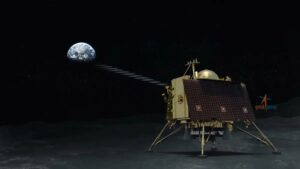Following its successful landing on the Moon on August 23, 2023, the Chandrayaan 3 mission conducted a series of scientific experiments, gathering crucial data on various lunar characteristics. This included measurements of temperature variations in the lunar topsoil (regolith), analysis of the elemental composition of the regolith, observations of energetic particles in the Moon’s thin atmosphere, and detection of moonquakes. Initially, this data was accessible only to the principal investigators, science coordinators, and instrument developers involved in the experiments on the Vikram lander and Pragyan rover.
However, the Indian Space Research Organisation (ISRO) will make this data publicly available on August 15, enabling scientists worldwide to analyze it and publish their own research.
At an event in New Delhi celebrating National Space Day, organized by the All India Council for Technical Education (AICTE) in collaboration with the Indian Space Association (ISpA), ISRO Chairman S Somanath announced, “All the experiments we planned on the Pragyan Rover and Vikram Lander were successful, and we have collected substantial data. Some scientific findings have already emerged, and we plan to release this data to the public on August 15.”
The mission’s seismometer was highly sensitive, detecting even the movement of the 26-kilogram Pragyan rover on the lunar surface, where gravity is only one-sixth that of Earth’s. A probe equipped with temperature sensors measured variations at different depths, revealing rapid drops in temperature, suggesting the potential presence of water ice near the surface. The rover also utilized a laser to analyze the elemental composition of the lunar regolith, identifying elements such as aluminum, sulfur, and iron. The data collected by Chandrayaan 3 has the potential to fuel scientific research for years, if not decades, to come.













